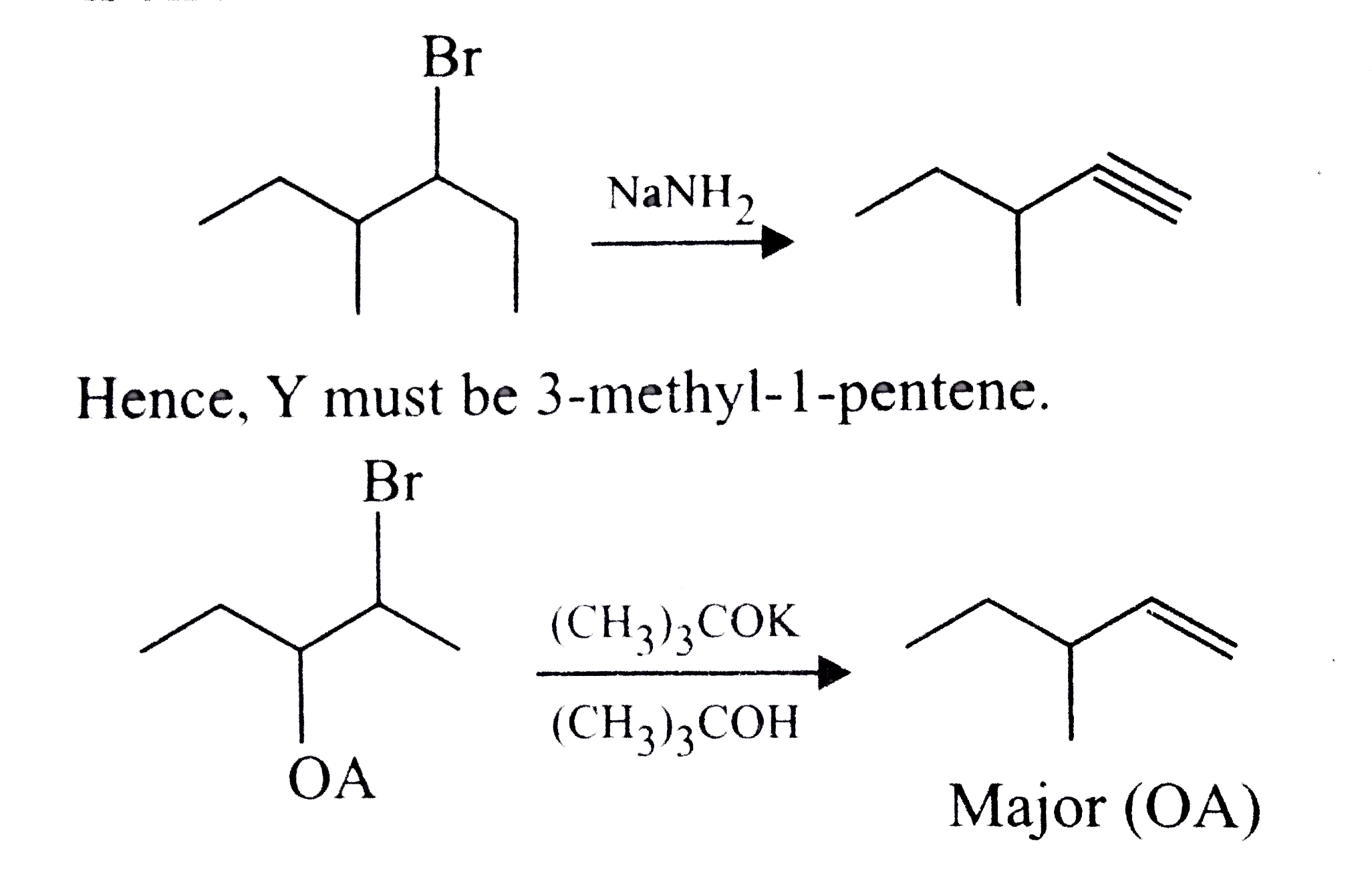An organic compound X(C6H13Br) is optically active, X on treatment with (CH3)3COK in (CH3)3COH gives Y(C6H12), a major product. Y on treatment with Br2−CCl4 in the presence of FeBr3 gives a dibromide which on further treatment with NaNH2 gives C6H10 which is still optically active. Hence, X and Y respectively are
A

B

C

D

Text Solution
The correct Answer is:d
The last product formed after dehydrobromination (−HBr) is an alkyne. The only six carbon, optically active alkyne is

|
Topper's Solved these Questions
- HYDROCARBONSBOOK - A2ZCHAPTER - HYDROCARBONSEXERCISE - Method of Preparation of Alkynes
59 Videos
- HYDROCARBONSBOOK - A2ZCHAPTER - HYDROCARBONSEXERCISE - Benzene
23 Videos
- HYDROCARBONSBOOK - A2ZCHAPTER - HYDROCARBONSEXERCISE - Chemical Properties Of Alkanes
97 Videos
- ENVIRONMENTAL CHEMISTRYBOOK - A2ZCHAPTER - ENVIRONMENTAL CHEMISTRYEXERCISE - Section D - Chapter End Test
30 Videos
- HYDROGENBOOK - A2ZCHAPTER - HYDROGENEXERCISE - Section D - Chapter End Test
30 Videos
Similar Questions
Knowledge Check
An alkene (C6H12) is optically active.This on reductive oxonolysis gives
AAcetoneBAcetaldehydeCFormaldehydeDPropanalThe gaseous compound A gives silver mirror test. A on treatment with NH3 gives C6H12N4. A would give
AHaloform reactionBCannizzaro's reactionCBimolecular reductionDAldol condensationA compound 'X' on treatment with Br2NaOH, provided C3H9N, which gives positive cabylamine test. Compound 'X' is:
ACH3COCH2NHCH3BCH3CON(CH3)2CCH3CH2COCH2NH2DCH3CH2CH2CONH2
A compound 'X' on treatment with Br2/NaOH, provided C3H9N, which gives positive carbylamine test. Compound 'X' is :
View SolutionGive the IUPAC name of m−ClCH2C6H4CH2C(CH3)3
View SolutionA compound 'X' on treatment with Br2/NaOH, provided C3H9N, which gives positive cabylamine test. Compound 'X' is :
View SolutionGive the IUPAC name of m−ClCH2C6H4CH2C(CH3)3
View SolutionCH3−CH2−Br on treatment with LiAlH4 gives ethane gas while (CH3)3C−Br on same treatment gives H2 gas because
View Solution
